One of the last wild mushrooms of the season, late fall oyster mushrooms (Sarcomyxa serotina) are an easy edible species to identify with a good texture and flavor. They're also known as the olive oysterling and are cultivated in Japan where they're known as mukitake. Confusingly, they aren't technically an oyster mushroom at all. Read on and I'll explain what you need to know.

Background
An underappreciated mushroom that can be found in months when fungi are scarce, these are abundant edible mushrooms, growing on a variety of trees across North America. What they lack in flavor they make up for with abundance and texture.
One of my friends started calling them snow oyster mushrooms after he picked them covered with snow one year in December, in Minnesota, of all the places!

Mycologist Arleen Bessette sums it up perfectly in Edible Wild Mushrooms of North America: "If (S. serotina) is less than outstanding, it's by no means mediocre".
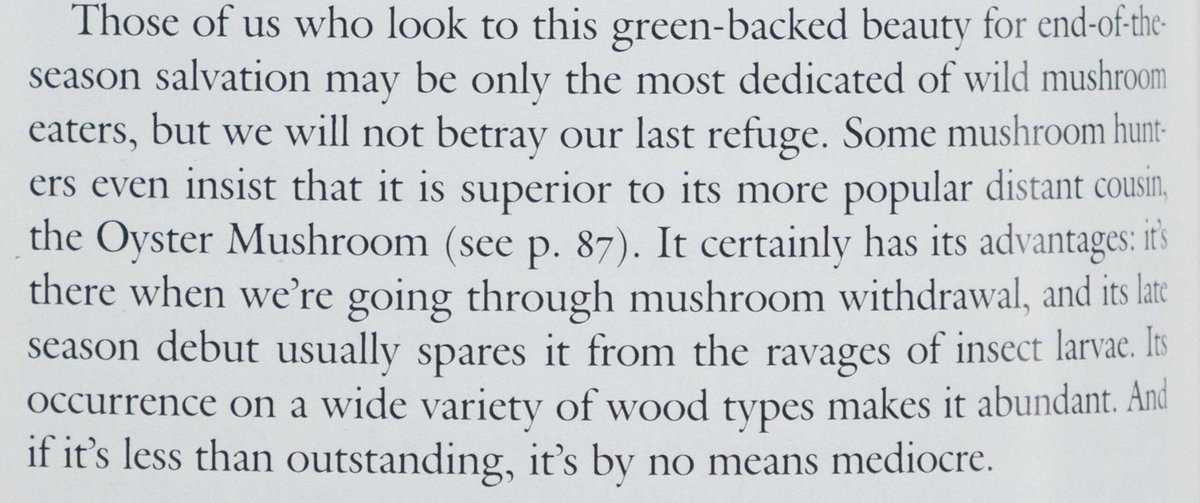
Synonyms
The true mukitake of Japan is Sarcomyxa edulis. The mushrooms have been renamed and classified more than most, and have at least 10 synonyms, including, but not limited to:
- Panellus serotinus
- Agaricus serotinus
- Pluerotus serotinus
- Hohenbuehelia serotina
Etymology
The genus name Sarcomyxa is from the Greek word särkō (flesh) and myxa (from Greek/Latin) referring to slime or mucus. That translates literally to slimy, fleshy mushrooms-delicious!
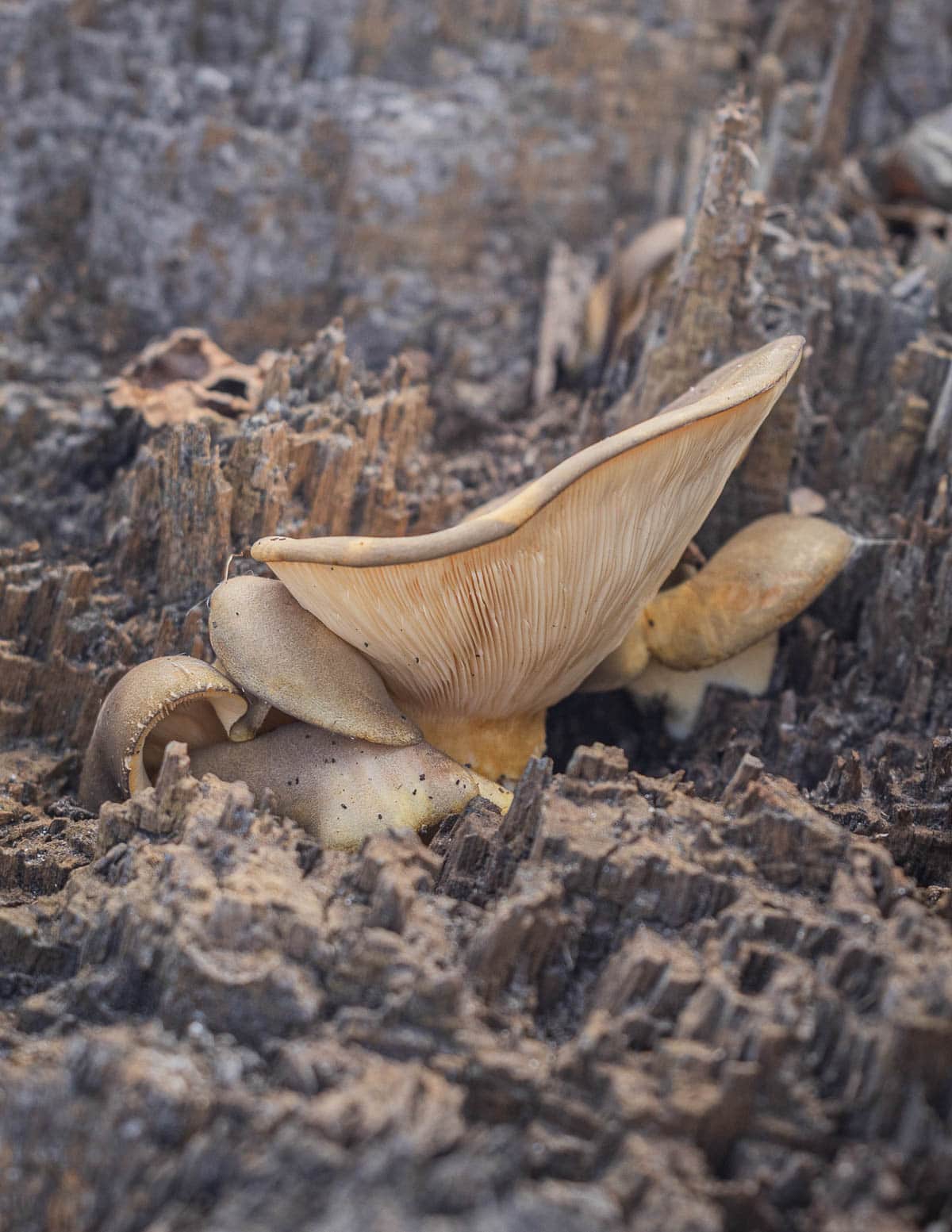
The epithet serotina comes from serotin (late) and refers to their appearance very late in the season.
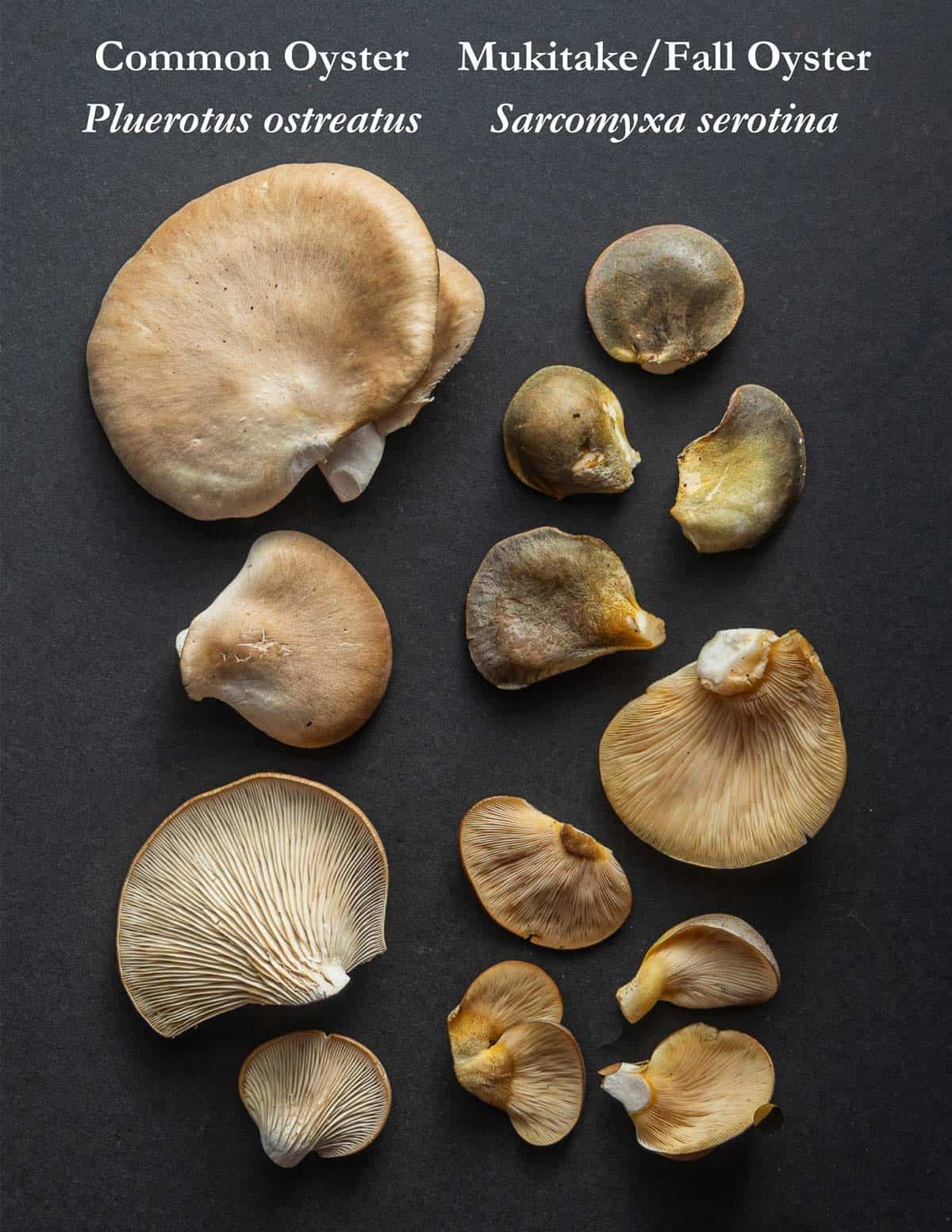
Identification
The mushrooms appear in the cold months from October through December and are found across North America, Europe and Japan after the first winter frosts. They're decomposers of hardwoods (saprophytic), so you'll look for them on fallen logs or dead trees.
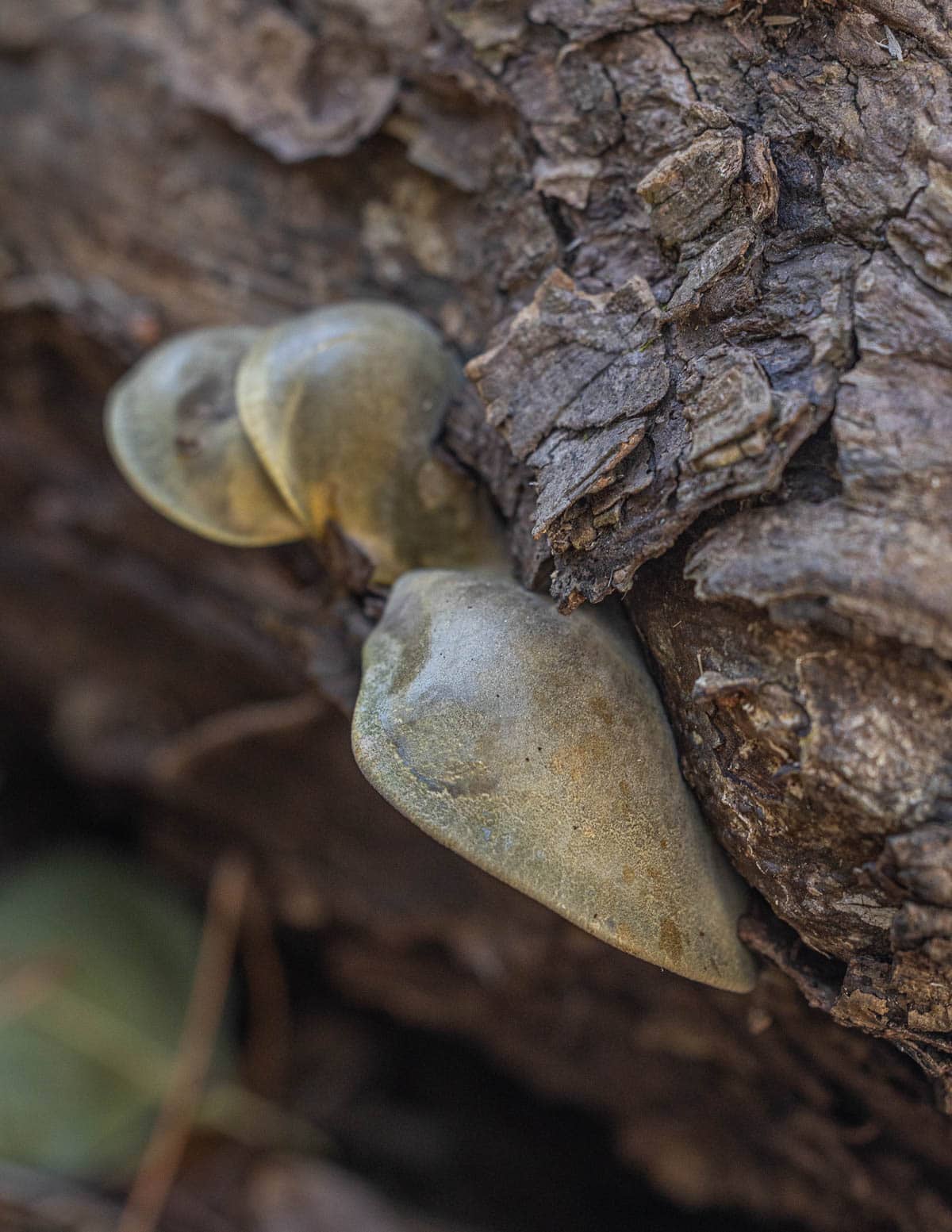
I found most of mine on maple, with the largest overlapping cluster growing on a fallen cottonwood. Late fall oysters also grow on beech, black cherry and conifers like hemlock.
Squirrels seem to love the mushrooms and looking for nibbled mushroom pieces helped me find them.
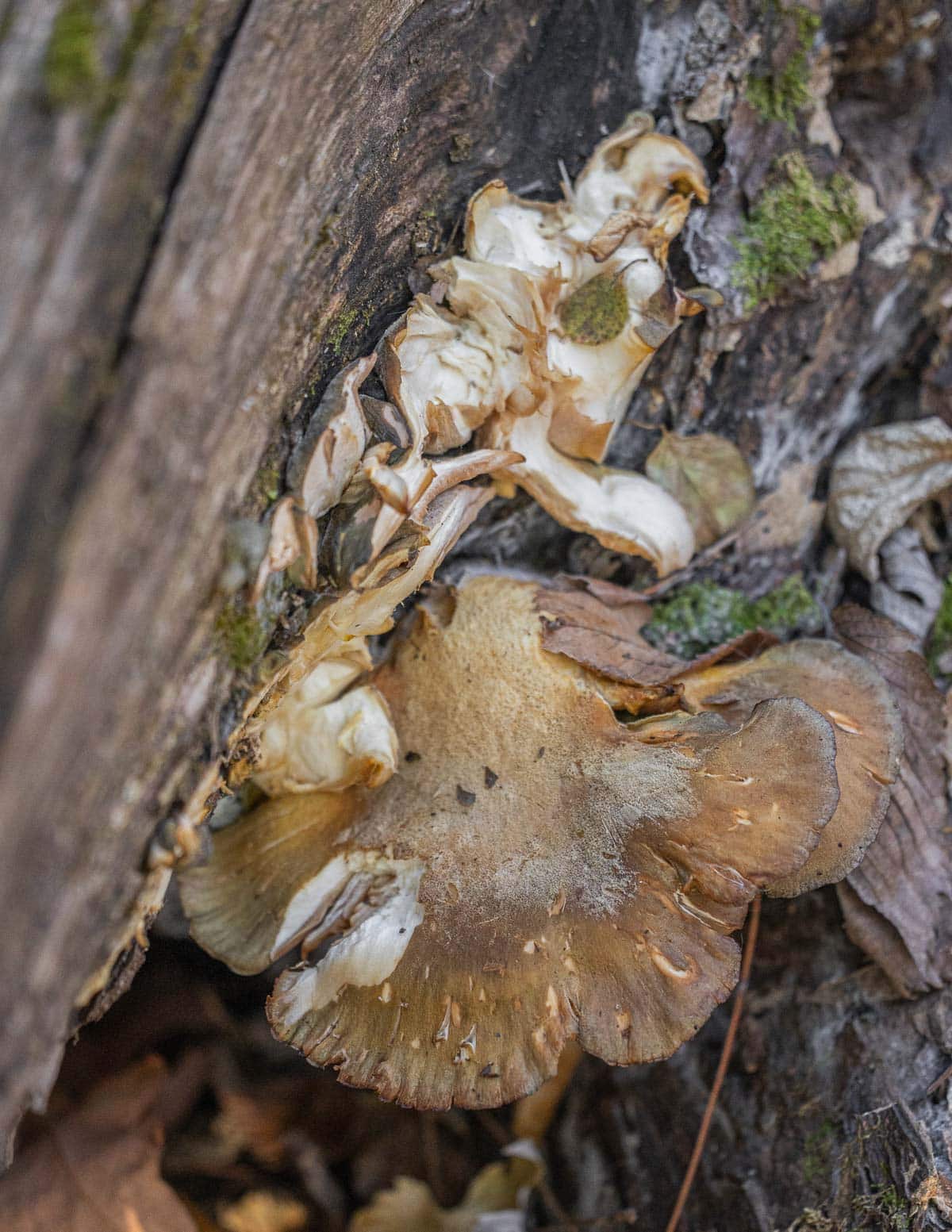
Below are a few key ID characteristics.
Caps
The caps are variable in color. Many are green to greenish yellow, but they can also have violet tones as well. When wet, they can be viscid (slimy).
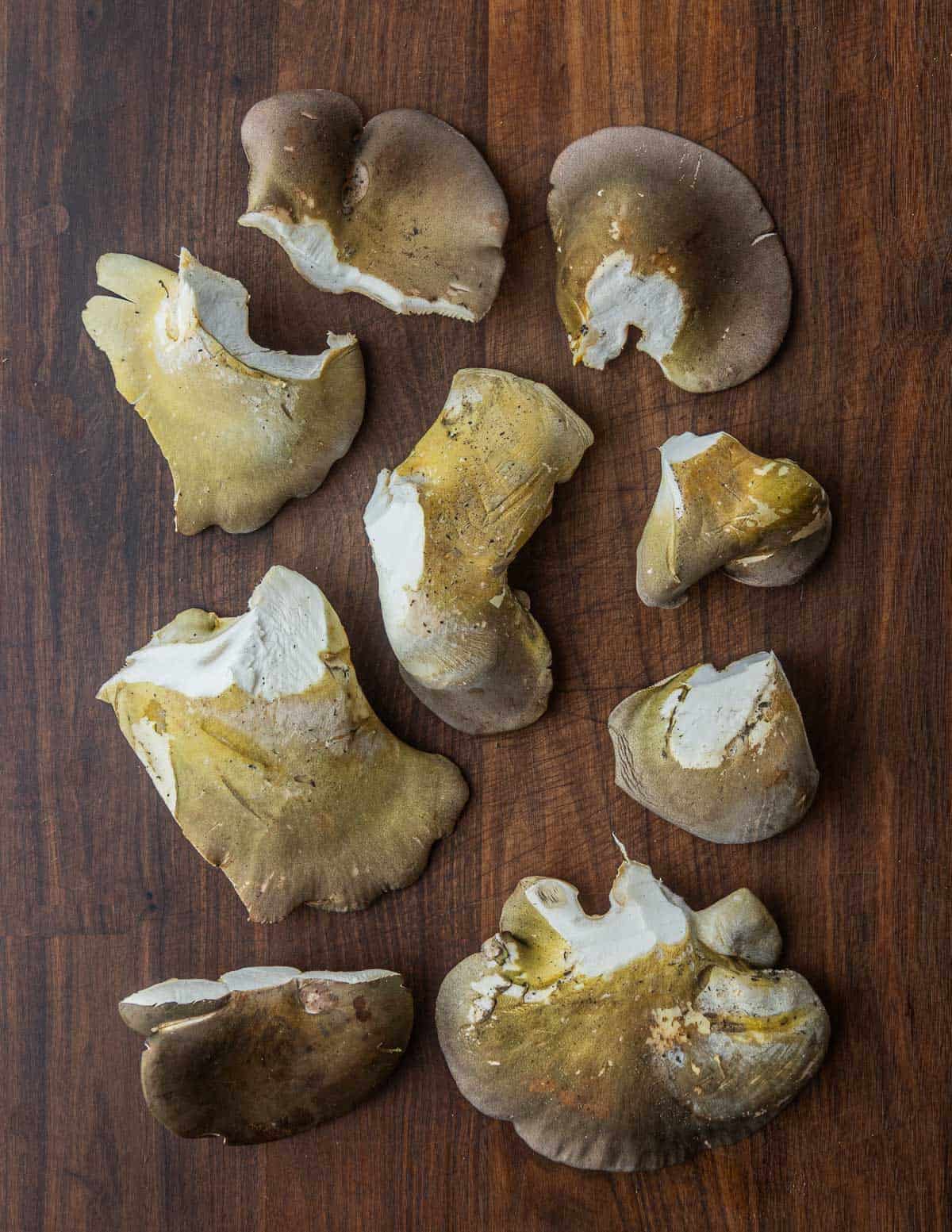
Gills
The yellowish gills are more tightly spaced than true oyster mushrooms. They're also decurrent, running down a short stem that can be downy or hairy, or not present at all.

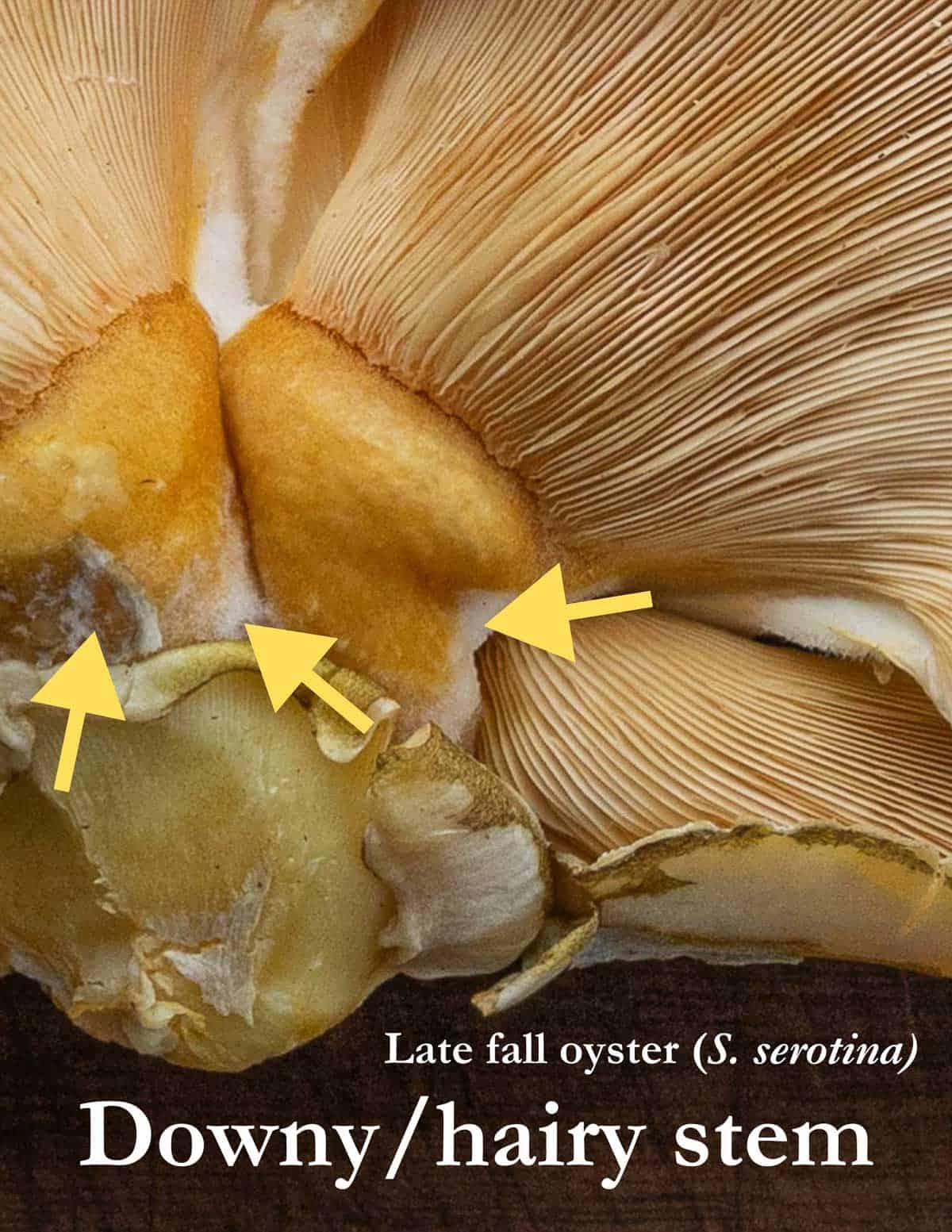
Flesh
The the flesh is white to cream colored with age and doesn't change color when sliced.
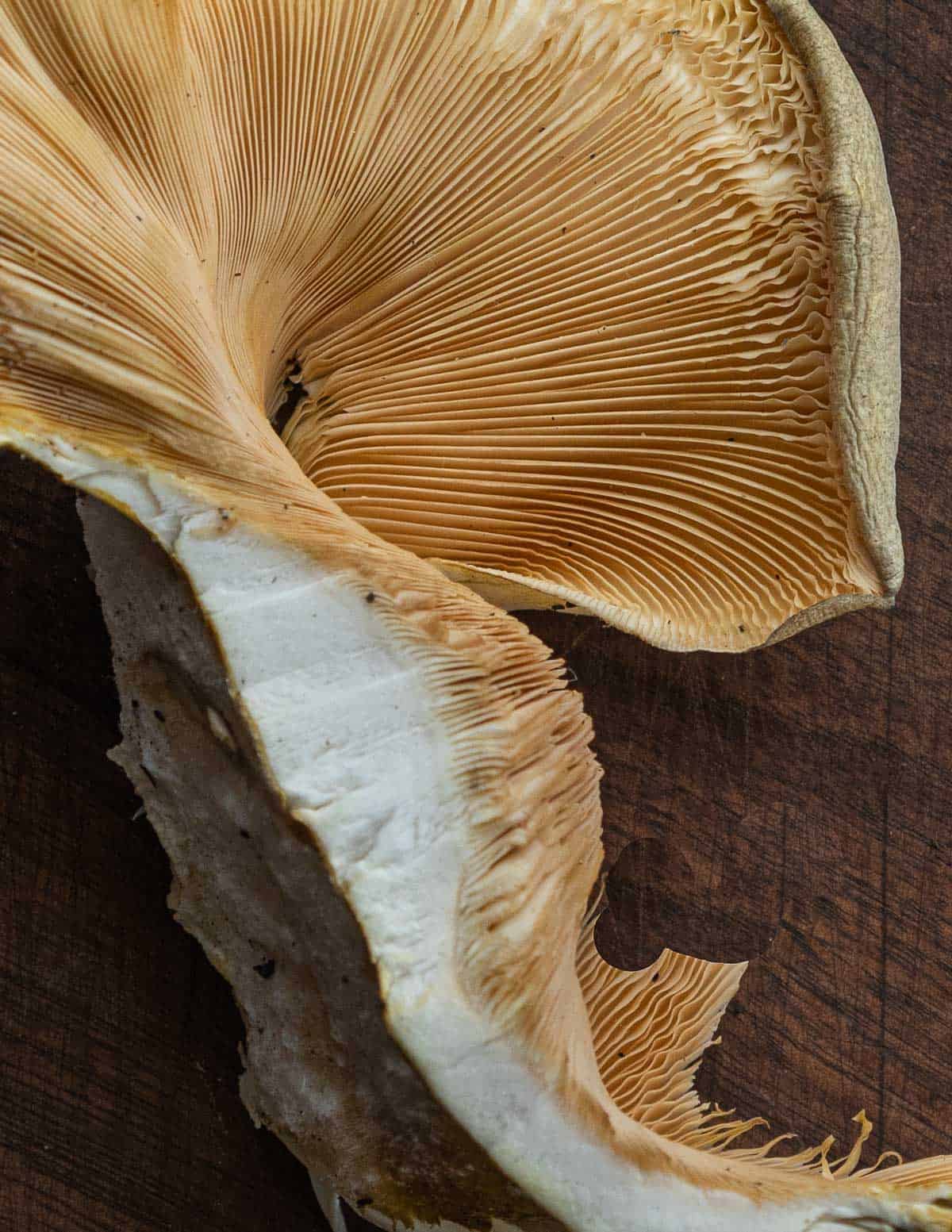
Sarcomyxa serotina Edibility
A German mycologist named Andreas Gminder postulated that S. serotina may contain carcinogens. Other mycologists were unable to reproduce his findings, but the misinformation spread and has damaged the reputation of this traditional food.

My colleague Adam Haritan of Learn Your Land spoke with Andreas. Low and behold, he's recanted, confirming there is in fact no evidence Sarcomyxa serotina contains carcinogens. The video proof is linked in the resources section.
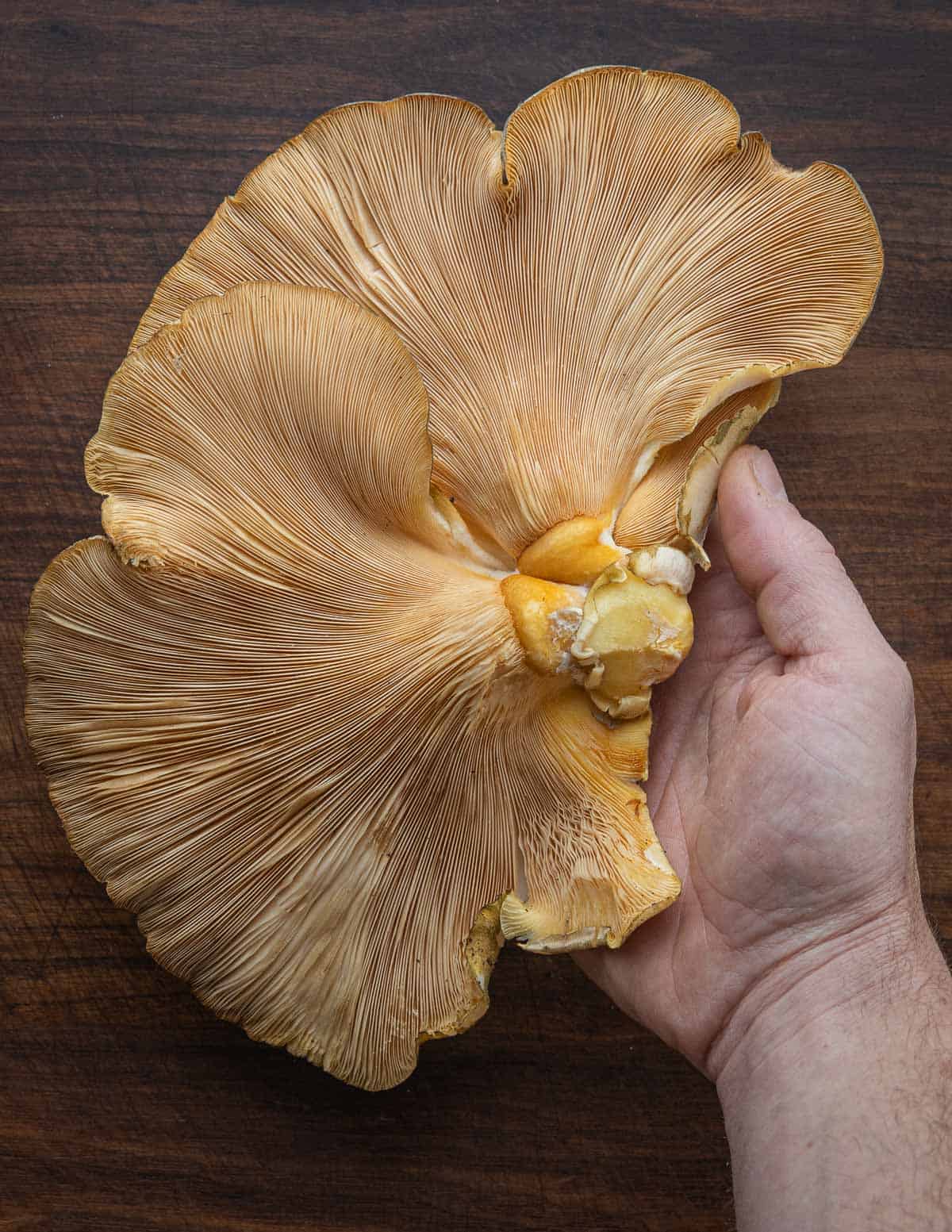
How to Cook Late Fall Oyster Mushrooms
The most important thing to know is that late fall oyster mushrooms need thorough cooking. I recommend at least 10-15 minutes as undercooking can cause upset stomachs in some people. I've ate 5 lbs over the course of 2 weeks without issue.

A slight bitter flavor is often reported, but I haven't tasted that in any of my collections, and slow cooking or grilling should negate. Slightly bitter mushrooms are good in heavily seasoned dishes like mushroom curry.
S. serotina has a mild taste. For the best flavor the mushrooms need slow cooking to remove water and concentrate flavor.
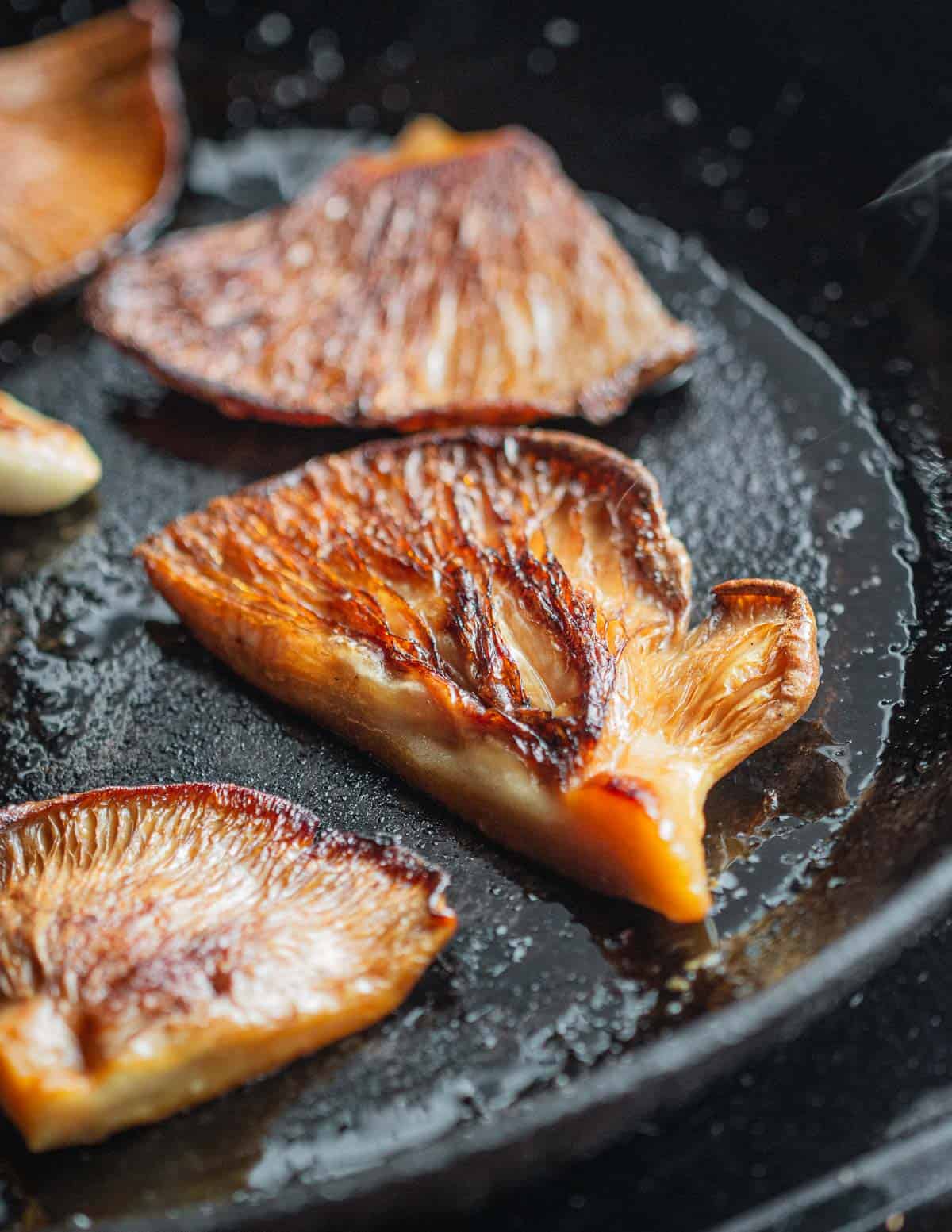
They lack the nutty flavor of true oyster mushrooms but make up for it as they can be gathered in good quantity. They're also often free of bugs in the cold months.
Dehydrated they're a perfect candidate for soup, especially my Italian Mushroom Soup.
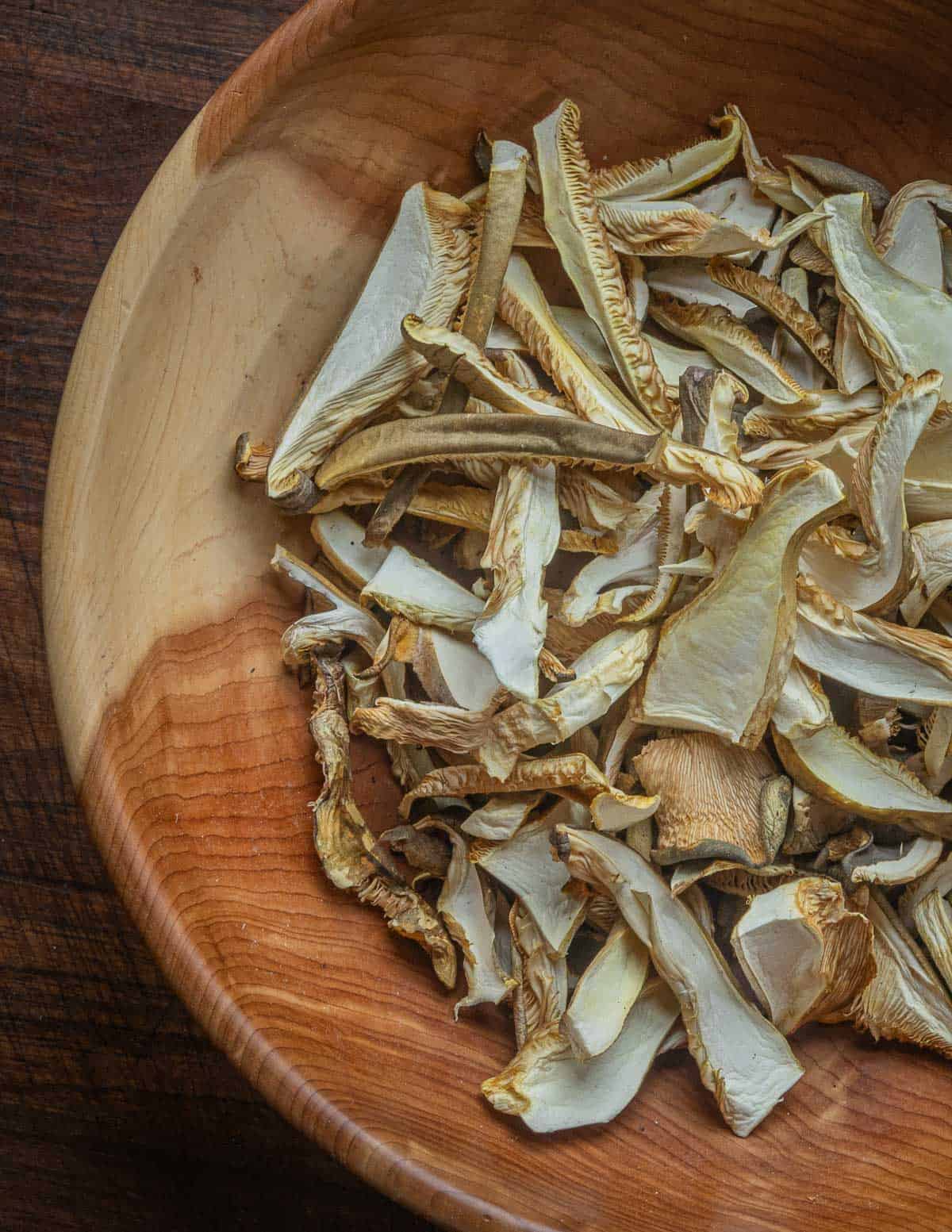
Late Fall Oyster Mushroom Recipes
In Japan they're often par-boiled to remove bitterness, but that enhances their slippery quality and will turn many people off. I spoke to my friend Kyoko from Japan and asked her if she knew of any traditional preparations in Japanese cuisine. She sent two videos I've linked in the resources section.

Here's a few ways to cook them. Watch the video for the full demonstration.
Slowly Sauteed
Cook the mushrooms slowly over medium heat, seasoning and adding extra oil as needed. It should take around 15-20 minutes. Cool, then reheat in a pan again to remove as much moisture as possible.
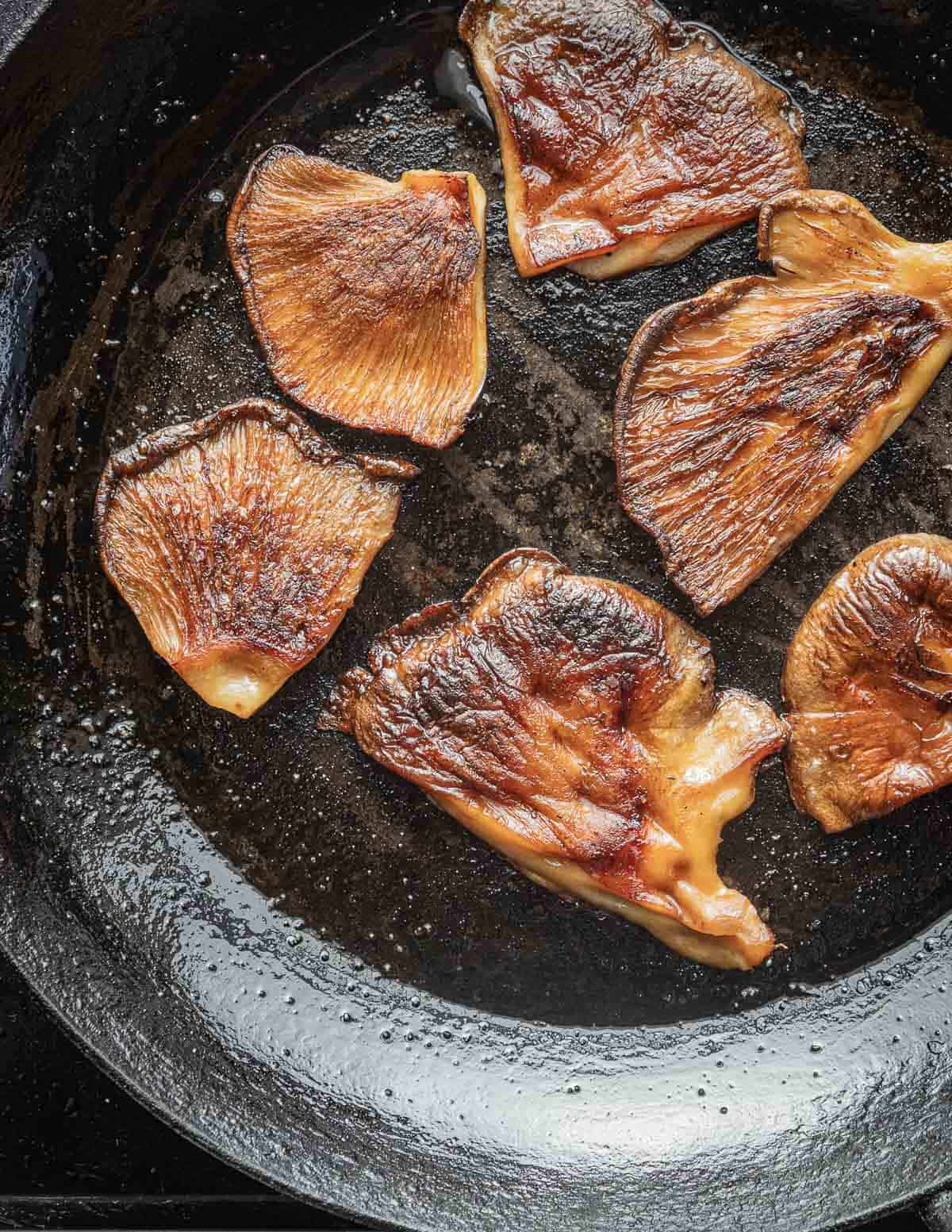
"Stir-Fried"
Follow the directions above for 8 oz of mushrooms. Reheat them quickly with 3 oz scallions, minced garlic and ginger, herbs like mint or cilantro. Finish with a splash of soy sauce and hot chili.
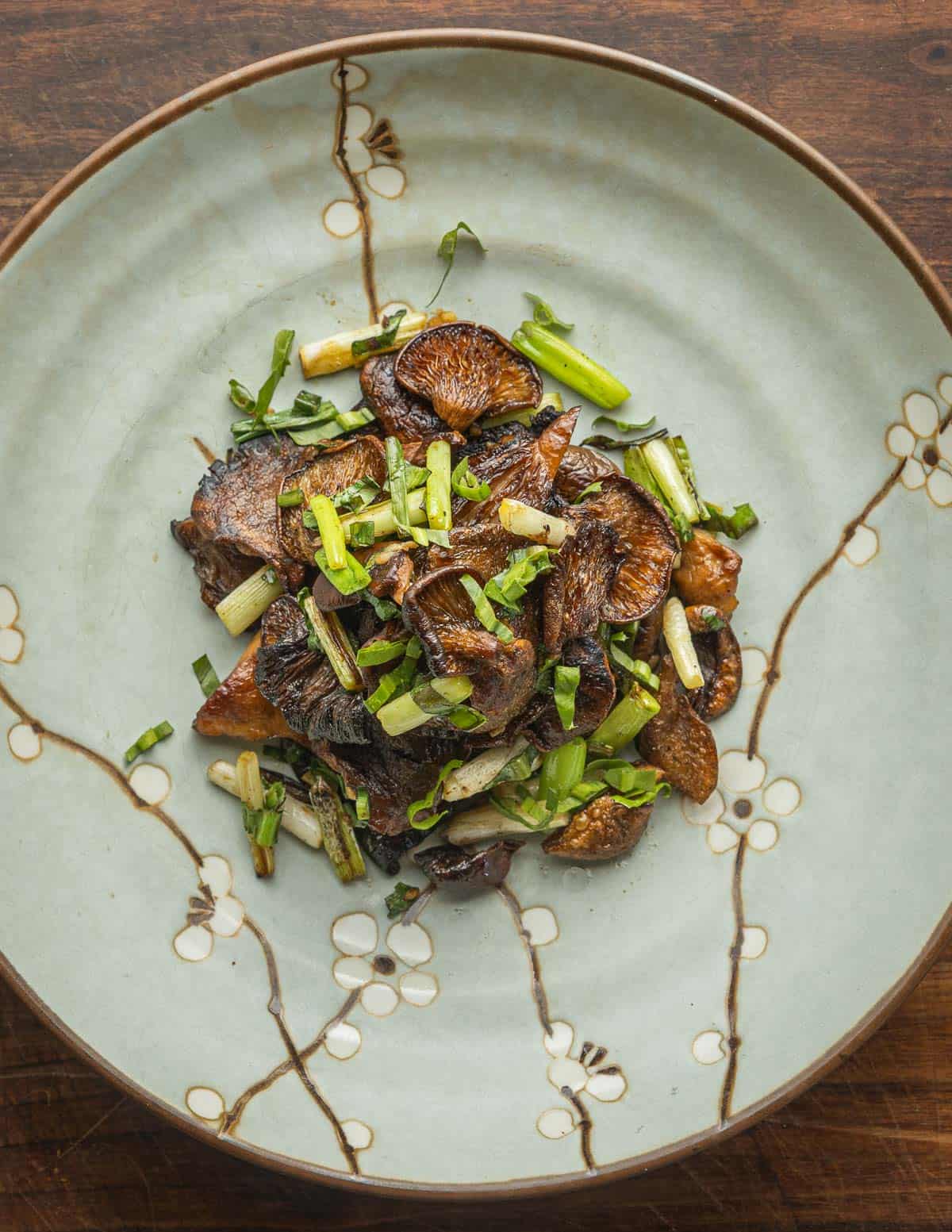
Grilled
Season the mushrooms with oil, salt, pepper and fresh thyme. Grill slowly over a wood fire. Reheating them in a pan to crisp them up is the best way I've eaten them so far.
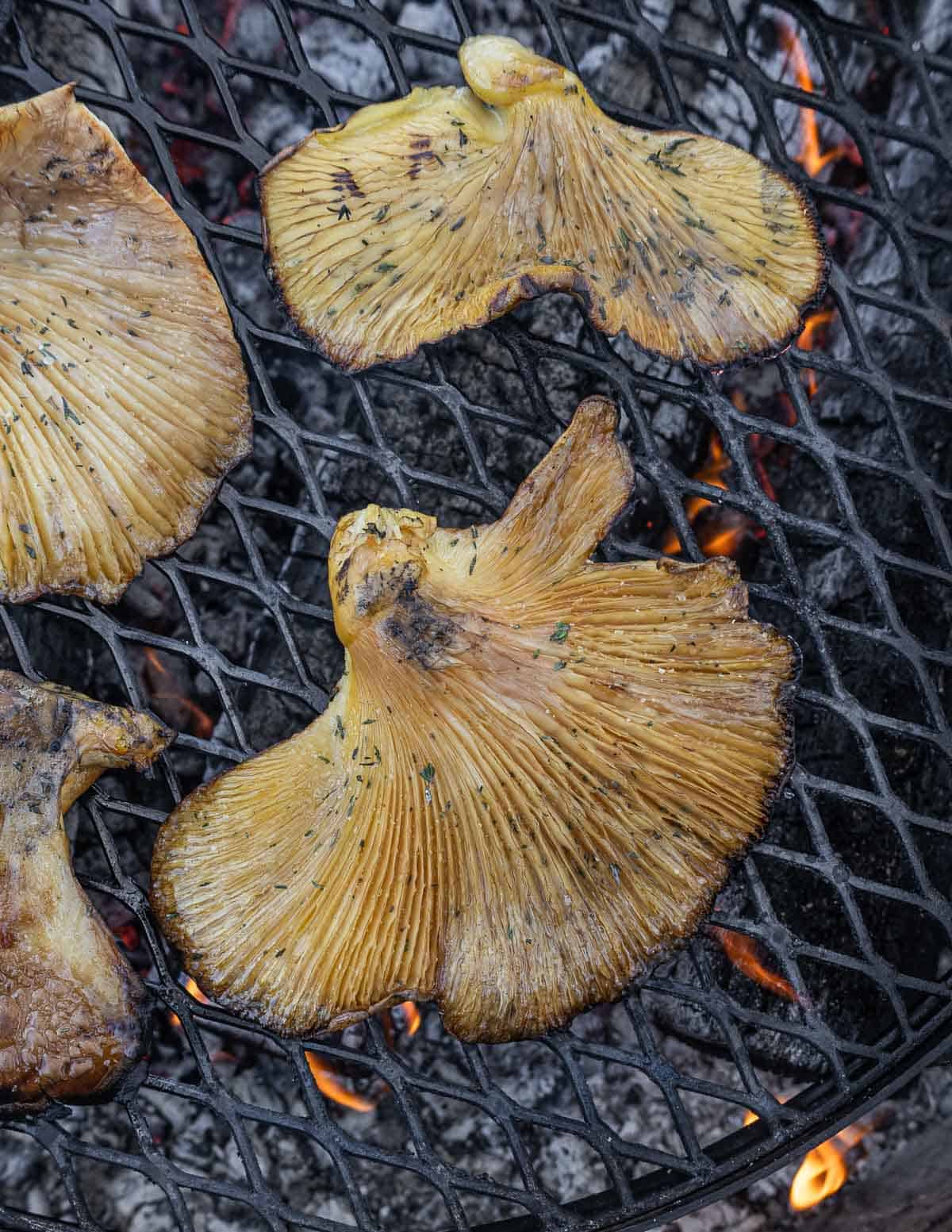
Related Posts


Cyn
Do we need to do any type of rinsing or peeling to remove the very viscous layer on the caps if we’ve found them wet?
Alan Bergo
Hi no peeling is necessary. Brush them clean with a damp cloth or swish them jn cold water and dry on towels.
Pixie
Hi, Alan.
I par-cooked several batches of Mukitake this year and successfully added them to various recipes. I was happy! Then I tried roasting some in the oven for an hour (1/2 hour on each side). The color was lovely and the seasoning tasty---but the texture was like a rain boot left out in the rain. Not happy.
After that, I tried your grilling idea. Both my grill and my skill were rather pathetic. Some got a bit charred and required triage. You would have laughed. Or maybe cried. But the great thing was that, even at less than "chef perfect," they were still quite delicious!
Just in case I get lucky and find one more flush, could you please provide me with an oven temperature and basic time range (or a recipe) so I can experiment with baking some?
Thanks for all your creative inspiration!
Pixie
One More Question: I've found quite few this year, with more to come. Is there any succesful way to preserve them by dehydrating or freezing...or would they be akin to leather?
Alan Bergo
No they can be dried or cooked and frozen.
Pixie
Darn! Now I can't stop thinking about building myself a woodfire grill. Can you please tell me how far above the hot coals the grill should sit?
Alan Bergo
Hi Pixie. You want the grates far enough above the mushrooms so they don't burn. Starting with lump wood charcoal is a lot easier than how I demonstrate it in the video.
Dan
Just learned about them from Adam Haritan’s Mushroom ID class. I’m hoping to find so around the Twin Cities Metro!
Alan Bergo
Dan people are still finding them right now. I’m going back out tmrw around St Paul.
Paul Stanley
Thank you for all this. I have to check out the Chestnut soup recipe.
Alan Bergo
Thanks Paul. The chestnut soup recipe is here.
Nicole
So grateful to have found this. The forest behind my house is silly with these right now! I don't cook with oil, so I air-fried them to get the moisture out, then "breaded" them with seasoned cauliflower crumbs. I ate some straight out of the air frier, dipped a couple in an Asian-style sweet pepper sauce, and plan to make a sandwich with the rest tomorrow. One word: Yum.
Alan Bergo
That sounds great. Way to be creative with the air fryer.
Geoff
They sure look like oyster mushrooms, and I've always regarded them as such, thouigh did not sufficiently appreciate them. But what's the point of diversifying Pleurotus? What are these new genus classifications supposed to communicate? Who cares?
Alan Bergo
Hey Geoff. I know the reclassification gets annoying. With this mushrooms it's actually important. The first thing that comes to mind that's very different from Pleurotus is that Sarcomyxa need extended cooking to prevent GI distress in some people where regular oyster mushrooms do not.
Olena
I've seen them on winter hikes, but never picked them. It's nice to add one more species to the very late mushroom season hunting!
Alan Bergo
I really enjoyed them this year.